Use this nursing care plan and management guide to help care for patients with obesity. Enhance your understanding of nursing assessment, interventions, goals, and nursing diagnosis, all specifically tailored to address the unique needs of individuals facing obesity. This guide equips you with the necessary information to provide effective and specialized care to patients dealing with obesity.
What is Obesity?
Obesity represents a state of excess storage of body fat, while the term overweight is defined as an excess of body weight for height. Obesity is a substantial public health crisis in the United States and in the rest of the industrialized world. This growing rate represents a pandemic that needs urgent attention if obesity’s potential toll on morbidity, mortality, and economics is to be avoided (Hamdy & Khardori, 2023).
The American Association of Clinical Endocrinologists (AACE) and the American College of Endocrinology (ACE) proposed a new name for obesity in 2016, adiposity-based chronic disease (ABCD). ABCD is not an actual replacement for the term obesity but it serves as a means of helping the medical community focus on the pathophysiologic impact of excess weight (Hamdy & Khardori, 2023).
The most widely accepted classification of obesity is from the World Health Organization (WHO), based on the body mass index (BMI).
- Grade 1 overweight or overweight indicates a BMI of 25 to 29.9 kg/m².
- Grade 2 overweight or obesity indicates a BMI of 30 to 39.9 kg/m².
- Grade 3 overweight or severe/morbid obesity indicates a BMI of >40 kg/m².
Some authorities also advocate a definition of obesity based on the percentage of body fat, with men having a percentage of body fat greater than 25% indicating obesity (borderline of 21 to 25%) and, in women, a percentage of body fat greater than 33%, with 31 to 33% being borderline (Hamdy & Khardori, 2023).
Nursing Care Plans & Management
Treatment of obesity starts with comprehensive lifestyle management including diet, physical activity, and behavior modification.
Nursing Problem Priorities
The following are the nursing priorities for patients with obesity.
- Providing support through lifestyle modifications
- Managing imbalance in nutrition
- Promoting adherence to therapeutic regimen
- Preventing complications of obesity
Nursing Assessment
Assess for the following subjective and objective data:
- Measurement of height and weight to determine the body mass index (BMI)
- Assessment of waist circumference and waist-to-hip ratio
- Evaluation of diagnostic laboratory studies for cardiovascular diseases, type 2 diabetes, and nonalcoholic fatty liver disease
- Screening for secondary diseases or disorders that may contribute to obesity
- Review of medication history and identification of medications associated with weight gain
Nursing Diagnosis
Following a thorough assessment, a nursing diagnosis is formulated to specifically address the challenges associated with obesity based on the nurse’s clinical judgement and understanding of the patient’s unique health condition. While nursing diagnoses serve as a framework for organizing care, their usefulness may vary in different clinical situations. In real-life clinical settings, it is important to note that the use of specific nursing diagnostic labels may not be as prominent or commonly utilized as other components of the care plan. It is ultimately the nurse’s clinical expertise and judgment that shape the care plan to meet the unique needs of each patient, prioritizing their health concerns and priorities.
Nursing Goals
Goals and expected outcomes may include:
- The client will develop a positive and realistic self-image, actively pursue appropriate weight loss, and take personal responsibility for their health and well-being.
- The client will adopt healthier eating behaviors, engage in regular exercise, and achieve and maintain weight loss while prioritizing their overall health.
Nursing Interventions and Actions
For patients with obesity, nursing interventions aim to assess and monitor their weight and vital signs, provide education on healthy eating habits and physical activity, develop personalized meal plans, promote regular exercise, support behavior modification, offer ongoing support and follow-up, and set achievable goals for weight loss and improved health outcomes. The goal is to assist patients in achieving sustainable weight loss or weight management, improving overall health, and reducing the risk of obesity-related complications. Therapeutic interventions and nursing actions for patients with obesity may include:
1. Ensuring Adherence to Dietary Restrictions for Optimal Nutritional Balance
Obesity has increasingly been recognized as a risk factor for several nutrient deficiencies, which may seem surprising given the likelihood of overconsumption of calories in these individuals. However, many of these additional calories are not from nutritious sources, and according to surveys conducted in the US and Canada, many individuals do not meet the recommended levels of micronutrients through diet. Contributing to the increasing prevalence of obesity is the greater availability of inexpensive foods that are rich in calories and nutrient deficient (Astrup & Bügel, 2019).
Review individual causes for obesity (organic or nonorganic).
This identifies and influences the choice of some interventions. The etiology of obesity is far more complex than simply an imbalance between energy intake and energy output. Nevertheless, the prevalence of inactivity in industrialized countries is considerable and relevant to the rise in obesity. A study also indicated that hypercortisolism associated with recurrent affective disorders increases the risk for metabolic disorders ad cardiovascular risk factors such as obesity, overweight, large waist, high low-density lipoprotein (HDL) levels, and low high-density lipoprotein (LDL) levels (Hamdy & Khardori, 2023).
Review daily food diary (caloric intake, types and amounts of food, eating habits).
This provides the opportunity for the individual to focus on a realistic picture of the amount of food ingested and corresponding eating habits and feelings. This also identifies patterns requiring a change or a base on which to tailor the dietary program. Because almost 30% of clients who are obese have eating disorders, screen for these in history. The possibility of bingeing, purging, lack of satiety, food-seeking behavior, night-eating syndrome, and other abnormal feeding habits must be identified because the management of these habits is crucial to the success of any weight-management program (Hamdy & Khardori, 2023).
Weigh periodically as individually indicated, and obtain appropriate body measurements.
This provides information about the effectiveness of the therapeutic regimen and visual evidence of the success of the client’s efforts. During hospitalization for controlled fasting, daily weighing may be required. Weekly weighing is more appropriate after discharge. Waist and hip circumference are useful surrogates in estimating visceral fat; serial tracking of these measurements helps in estimating the clinical risk over time (Hamdy & Khardori, 2023).
Reassess calorie requirements every two to four weeks; provide additional support when plateaus occur.
Changes in weight and exercise necessitate changes in plan. As weight is lost, changes in metabolism occur, resulting in plateaus when weight remains stable for periods of time. This can create distrust and lead to accusations of “cheating” on caloric intake, which are not helpful. The client may need additional support at this time.
Evaluate the degree of fat as indicated.
BMI calculation, waist circumference, and waist/hip ratio are the common measures of the degree of body fat used in routine clinical practice. Les expensive techniques for direct measurement of visceral fat include abdominal ultrasonography and abdominal bioelectrical impedance (Hamdy & Khardori, 2023).
Explore and discuss emotions and events associated with eating.
This helps identify when the client is eating to satisfy an emotional need, rather than physiological hunger. Stress and other negative emotions, such as depression and anxiety, can lead to both decreased and increased food intake. Emotional eating can be caused by various mechanisms, such as using eating to cope with negative emotions or confusing internal states of hunger and satiety with physiological changes related to emotions (Konttinen, 2020).
Formulate an eating plan with the client, using knowledge of the individual’s height, body build, age, gender, and individual patterns of eating, energy, and nutrient requirements. Determine which diets and strategies have been used, results, individual frustrations, and factors interfering with success.
Although there is no basis for recommending one diet over another, a good reducing diet should contain foods from all basic food groups with a focus on low-fat intake and adequate protein intake to prevent loss of lean muscle mass. It is helpful to keep the plan as similar to the client’s usual eating pattern as possible. A plan developed with and agreed to by the client is more likely to be successful.
Emphasize the importance of avoiding fad diets.
Elimination of needed components can lead to metabolic imbalances like excessive reduction of carbohydrates can lead to fatigue, headache, instability and weakness, and metabolic acidosis (ketosis), interfering with the effectiveness of a weight loss program. The Atkins diet is a high protein and/or high fat, very low carbohydrate diet that induces ketosis. Ketone bodies tend to be generated when an individual’s daily dietary carbohydrate intake is under 50 g, and sodium diuresis is forced, causing most of the short-term weight loss. No robust data about the safety or long-term effectiveness of this diet are available (Hamdy & Khardori, 2023).
Discuss the need to give themselves permission to include desired or craved food items in the dietary plan.
Denying self by excluding desired or favorite foods result in a sense of deprivation and feelings of guilt and failure when an individual “succumbs to temptation.” These feelings can sabotage weight loss. However, even though experimentally induced negative mood state has been found to improve immediately after eating palatable food, the effect tends to be short-term and can be followed by other negative emotions, such as feelings of guilt (Konttinen, 2020).
Be alert to binge eating and develop strategies for dealing with these episodes (substituting other actions for eating).
The client who binges experiences guilt about it, which is also counterproductive because negative feelings may sabotage further weight loss efforts. Binge eating disorder (BED) is a mental illness characterized by recurrent binge eating episodes in the absence of appropriate compensatory behaviors. BED is strongly related to obesity due to caloric overconsumption (Aguera et al., 2020).
Identify realistic increment goals for weekly weight loss.
Reasonable weight loss (one to two lbs per wk) results in more lasting effects. Excessive and rapid loss may result in fatigue and irritability and ultimately lead to failure in meeting goals for weight loss. Motivation is more easily sustained by meeting “stair-step” goals. However, it is becoming increasingly apparent that the weight-loss goal for each client must be individualized and cannot be unilaterally based on standard weight-for-height norms (Hamdy & Khardori, 2023).
Determine current activity levels and plan a progressive exercise program (walking) tailored to the individual’s goals and choices.
Exercise furthers weight loss by reducing appetite; increasing energy; toning muscles; and enhancing cardiac fitness, sense of well-being, and accomplishment. Commitment on the part of the client enables the setting of more realistic goals and adherence to the plan. Aerobic isotonic exercise is of the greatest value for clients who are obese. The ultimate minimum goal should be to achieve 30 to 60 minutes of continuous aerobic exercise five to seven times per week. Increased physical activity and exercise for 300 minutes per week are associated with significant weight reduction and longer maintenance of weight loss (Hamdy & Khardori, 2023).
Develop an appetite re-education plan with the client.
Signals of hunger and fullness often are not recognized, have become distorted, or are ignored. Accumulating evidence suggests that appetitive traits, such as food cue responsiveness and satiety responsiveness, are associated with overeating and weight in youth and adults. It is possible that some individuals have a behavioral susceptibility to overeating. It was hypothesized that individuals with obesity or overweight are more reactive to external cues to eat and less sensitive to internal satiety signals compared with individuals with a healthy weight (Boutelle, 2020).
Emphasize the importance of avoiding tension at mealtimes and not eating too quickly.
Reducing tension provides a more relaxed eating atmosphere and encourages more leisurely eating patterns. This is important because a period of time is required for the appestat mechanism to know the stomach is full. The appestat is part of the brain that regulates hunger and is found in the hypothalamus. With proper eating habits, the appestat indicates when an individual has had enough to eat. It prevents the client from overeating, which in turn regulates digestion and hormone secretion. Messages are sent to the appestat as soon as blood glucose levels fall below a certain point. When the appestat receives these stimuli, hormones are secreted to make the client feel hungry. Once the client is full the stimuli reverse, as do hormones, which makes the client feel full and is the signal to stop eating. (Real Meal Revolution, 2019)
Encourage the client to eat only at a table or designated eating place and avoid standing while eating.
Techniques that modify the behavior may be helpful in avoiding diet failure. Behavioral modification for weight loss addresses learned behaviors that contribute to excessive food intake, poor dietary choices or habits, and sedentary activity habits (Hamdy & Khardori, 2023).
Discuss restriction of salt intake and diuretic drugs if used.
Water retention may be a problem because of increased fluid intake and fat metabolism. Energy intake is the most important confounding factor for the link between salt intake and overweight or obesity because high salt intake may stimulate thirst and appetite and lead to more energy intake. Another possible explanation for a valid link between salt intake and obesity is that higher salt intake may result in more fluid intake and may thereby contribute to weight increase (Zhou et al., 2019).
Consult with a dietitian to determine caloric and nutrient requirements for individuals’ weight loss.
Individual intake can be calculated by several different formulas, but weight reduction is based on the basal caloric requirement for 24 hours, depending on the client’s sex, age, current and desired weight, and length of time estimated to achieve the desired weight. Note: Standard tables are subject to error when applied to individual situations, and circadian rhythms and lifestyle patterns need to be considered.
Provide fat substitutes as indicated.
Olestra has been approved for use as a dietary supplement and additive in various foods, such as potato chips and crackers. Olestra has a caloric value of 0 kcal/g, whereas fat has a value of approximately 9.1 kcal/g. In many trials, olestra had fairly good tolerability, although foods containing it are apparently less tasty than foods cooked in regular fat (Hamdy & Khardori, 2023).
Hospitalize for fasting regimen and stabilization of medical problems, when indicated.
Aggressive therapy and support may be necessary to initiate weight loss, although fasting is not generally a treatment of choice. The client can be monitored more effectively in a controlled setting, minimizing complications such as postural hypotension, anemia, cardiac irregularities, and decreased uric acid excretion with hyperuricemia. Inpatient programs may offer the convenience of easy access to clients and ease of monitoring, but they are not only expensive to run and difficult to reimburse, and they also generally cause considerable disruption to the client’s regular routine. Additionally, they offer little guarantee of sustained effect (Hamdy & Khardori, 2023).
Prepare for surgical interventions (gastric partitioning or bypass) as indicated.
These interventions may be necessary to help the patient lose weight when obesity is life-threatening. Surgical therapy for obesity or bariatric surgery is the only available therapeutic modality associated with clinically significant and relatively sustained weight loss in subjects with morbid obesity associated with comorbidities (Hamdy & Khardori, 2023).
Note weight, and waist circumference, and calculate body mass index (BMI).
The exact weight needs to be documented, as the patient may have been estimating over time. Men with a waist circumference greater than 40 inches and women with a greater than 35 inches are at higher risk for obesity-related complications. BMI describes relative weight for height and is significantly associated with total body fat content. BMI is the patient’s weight in kilograms divided by the square of his or her height in meters. A BMI between 20 and 24 is associated with healthier outcomes. BMIs greater than 25 are associated with increased morbidity and mortality.
Obtain a thorough history.
The most appropriate patients for the nursing intervention of Weight Management are adults with no major health problems who require diet therapy.
Evaluate the patient’s physiological status in relation to weight control.
Nondieting approaches focus on changing disturbed thoughts, emotions, and body image associated with obesity to help obese persons accept themselves and resolve concerns that prevent long-term weight maintenance.
Assess the effects or complications of being overweight.
Medical complications include cardiovascular and respiratory dysfunction, sleep-disordered breathing, higher incidence of diabetes mellitus, and aggravation of musculoskeletal disorders. Social complications and poor self-esteem may also result from obesity.
Position the patient in the low Fowler position to optimize chest expansion, thereby mitigating the adverse effects of obesity hypoventilation syndrome.
Placing the patient in the low Fowler position helps maximize diaphragmatic chest expansion, which can improve ventilation and reduce the risk of respiratory complications associated with obesity hypoventilation syndrome. This positioning allows for effective respiratory function and supports adequate oxygenation.
Implement continuous pulse oximetry monitoring to closely monitor oxygen saturation levels in patients with obesity-related respiratory complications.
Continuous pulse oximetry monitoring provides real-time feedback on the patient’s oxygen saturation levels. This allows for early identification of hypoxemia, enabling prompt intervention to maintain adequate oxygenation. Monitoring oxygen levels helps prevent further respiratory deterioration and promotes appropriate respiratory support.
Ensure adherence to prescribed therapies, such as oral appliances or continuous positive airway pressure (CPAP), in patients with a known diagnosis of obstructive sleep apnea.
It is important to support patients with a diagnosis of obstructive sleep apnea in utilizing prescribed therapies, such as oral appliances or CPAP, even during hospitalization or transitional care. These interventions help maintain effective breathing and prevent respiratory failure. Nursing staff should provide education, encouragement, and assistance to ensure proper usage and adherence to the prescribed therapies, as they play a vital role in managing the respiratory complications associated with obesity and sleep apnea.
Evaluate the patient’s lifestyle habits, considering bariatric surgery or nonsurgical interventions, such as vagal blocking therapy or intragastric balloon therapy, for those with severe obesity or Class II obesity with related diseases or disorders who have not responded to other interventions.
Some patients with severe obesity or comorbid conditions may not respond to lifestyle interventions or antiobesity medications. Minimally invasive interventions or bariatric surgery might be a more effective approach for these patients, facilitating weight loss and alleviating symptoms of related diseases.
For older adults with obesity, provide counseling on lifestyle modifications, emphasizing the importance of reducing dietary caloric intake and improving the quality of calories consumed.
Older adults with obesity are at risk of multiple health complications. Research suggests that diet modification, focusing on quality of calories consumed rather than just quantity, can help in weight management. Guidance on consuming specific types of food, such as soluble fibers, and reducing others, like fats, can improve overall health outcomes.
Assess older adults with obesity for potential candidate for bariatric surgery, taking into consideration their overall health status, potential benefits and risks, and coverage considerations.
While older adults with obesity can potentially benefit from bariatric surgery, their weight loss might be less than that of younger adults, and there may be other health considerations at play. Careful assessment can ensure the most appropriate and effective treatment plan is pursued.
Determine the patient’s knowledge of a nutritious diet and the need for supplements.
This information is helpful in developing an individualized teaching plan based on the patient’s current state.
Assess dietary intake through 24-hour recall or questions regarding the usual intake of food groups.
Data may not be fully accurate. Permits appraisal of patient’s knowledge about diet also.
Determine the patient’s readiness to initiate a weight loss regimen by asking questions such as the following: “How do you feel about starting a weight loss program?” and “Are you ready to choose a time to start changing your eating habits?“
More specific directions regarding weight loss can be addressed if the patient is in the preparation or action stages.
Observe for situations that indicate a nutritional intake of more than body requirements.
Such observations help gain a clear picture of the patient’s dietary habits.
Conduct a nutritional assessment such as daily food intake, caloric intake, activity at the time of eating, location of meals, meals skipped, snacking patterns, and social/familial considerations.
Environmental factors greatly contribute to obesity than genetics or biological vulnerability. Assessment of current eating patterns provides a baseline for change. Assessment methods may include 24-hour recall and foods eaten, food diaries/records, or food frequency recording using typical food groups.
Discover the behavioral factors that contribute to overeating.
Overeating may be triggered by environmental cues and behavioral factors unrelated to physiological hunger sensations.
Determine the patient’s reasons to lose weight, whether for appearance or health benefits.
Successful change is more likely to occur if the patient has formulated plans for dealing with any barriers.
Assess the patient’s ability to read food labels.
Food labels contain information necessary for making appropriate selections, but can be misleading. Patients need to understand that “low-fat” or “fat-free” does not mean that a food item is calorie-free. In addition, attention should be paid to serving size and the number of servings in the food item.
Assess for use of nonprescription diet aids.
Clinicians should be aware that apparently harmless herbal remedies may have potent ingredients that are not subjected to the same analysis that the FDA devotes to prescription drugs.
Determine the patient’s ability to plan a menu and make appropriate food selections.
This information provides the starting point for the educational sessions. Teaching content the patient already knows wastes valuable time and hinders critical learning.
Assess the patient’s ability to accurately identify appropriate food portions.
Serving sizes must be understood to limit intake according to a planned diet.
Observe for overuse of particular nutrients.
Patients who are consuming excessive amounts of some nutrients may also be consuming less than adequate amounts of others.
Initiate a patient contract that includes rewarding and reinforcing progressive goal attainment.
Patient contracts render a unique chance for patients to learn to analyze their behavior in relation to the environment and to choose behavioral strategies that will facilitate learning.
Set appropriate short-term and long-term goals.
Improvement in nutritional status may take a long time. The patient may lose interest in the whole process without short-term goals.
Negotiate with the patient regarding the aspects of his or her diet that will need to be modified.
Give and take with the patient will lead to culturally harmonious care.
Suggest the patient to keep a diary of food intake and circumstances surrounding its consumption (methods of preparation, duration of meal, social situation, overall mood, activities accompanying consumption).
Self-monitoring helps the patient assess adherence to self-determined performance criteria and progress toward desired goals. Self-monitoring serves an important role in the maintenance of internal standards of behavior.
Advise the patient to measure food regularly.
Measuring food alerts patients to normal portion sizes. Estimating amounts can be extremely inaccurate.
Encourage increased fluid intake as tolerated.
Water helps in the elimination of byproducts of fat breakdown and helps prevent ketosis.
Review the patient’s current exercise level. Along with the patient and primary healthcare provider, design a long-term exercise program.
Exercise is vital for increased energy expenditure, for maintenance of lean body mass, and as a component of a total change in lifestyle.
Weigh the patient twice a week under the same conditions.
It is important to most patients and their progress to have an actual reward that the scale shows. Monitoring twice a week keeps the patient on the program by not allowing him or her to eat out of control for a couple of days and then fast to lose weight.
Educate the patient about adequate nutritional intake. A total plan permits occasional treats.
Permanent lifestyle changes must occur for weight loss to be long-lasting. Excluding all treats is not sustainable. During energy restriction, a patient should consume 72 to 80 g of high biological-value protein per day to lessen the risk of ventricular arrhythmias.
Familiarize the patient with the following behavior modification techniques:
Self-monitoring is the centerpiece of behavioral weight loss intervention programs. In short, self-monitoring is fundamentally linked to successful weight loss.
Allow and encourage the patient to adopt an exercise routine that involves 45 minutes of exercise five times per week.
Moderately intense physical activity for 30 to 45 minutes 5 to 7 days/week can expend the 1500 to 2000 calories/week that appear to be necessary to maintain weight loss.
Provide the patient and family with information regarding the treatment plan options.
Because the goal is to obtain a permanent change in weight management, the decision regarding treatment plans should be left up to the patient and family.Guide the patient regarding changes that will make a major impact on health.
Even modest weight loss contributes to diabetes and hypertension control.
Acquaint the patient and family of the disadvantages of trying to lose weight by dieting alone.
With a reduced-calorie diet alone, as much as 25% of the weight loss can be lean body mass rather than fat.
Explain the importance of exercise in a weight control program.
A physically conditioned person uses more fat for energy at rest and with exercise than a sedentary person does.
Teach stress reduction methods as alternatives to eating.
The patient needs to substitute healthy for unhealthy behaviors.
Administer medications for obesity, as indicated.
See pharmacologic interventions
2. Enhancing Body Image and Self-Esteem
Body image dissatisfaction is higher in the morbidly obese and is one of the motivating factors to undertake surgery. Pre-operative dissatisfaction with appearance has been linked to low self-esteem, depression, and anxiety and there is evidence that the effects of body image dissatisfaction on psychological distress are mediated by emotional eating (Caltabiano, 2020).
Provide respectful, courteous, and empathetic care to patients with obesity, addressing personal biases and using patient-first language to dispel bias and promote a supportive and non-stigmatizing environment.
By adopting respectful and empathetic behavior towards patients with obesity, nurses can help counteract the stigmatization that these patients often experience. Confronting personal attitudes and beliefs about obesity can aid in recognizing and addressing biases. Using patient-first language (“patient with obesity”, rather than “obese patient”) which focuses on the individual rather than the condition, contributes to creating a supportive and non-judgmental environment. These interventions promote better patient-nurse relationships and encourage patients with obesity to actively engage in their healthcare
Determine the client’s view of being fat and what it does for the individual.
The mental image includes our ideal and is usually not up-to-date. Fat and compulsive eating behaviors may have deep-rooted psychological implications (compensation for lack of love and nurturing or defense against intimacy). Higher stress was associated with higher food intake. A possible explanation for these findings can be increased cortisol levels due to physiological stress reactions that may lead to the selection of more calorie-dense foods and therefore increase food intake (Ziser et al., 2019).
Determine relationship history and the possibility of sexual abuse.
This may contribute to current issues of self-esteem and patterns of coping. People who have experienced childhood trauma have been found to be at an increased risk of developing obesity as adults. The attachment style is a psychological feature that develops early in life and it is based on the quality of an individual’s experiences with their caregivers; furthermore, it can consequently influence the individual’s future intimate relationships (Bianciardi et al., 2019).
Assess the client’s goals and expectations before planning for care.
Before enrolling the client in any weight-loss program, the clinician must have a clear idea of that client’s expectations. A client with unrealistic expectations should not be enrolled until these are changed to realistic and attainable goals. The nurse should guide the client who seeks weight reduction to create goals that fit the mnemonic SMART: Specific, Measurable, Attainable, Realistic, and Timely (Hamdy & Khardori, 2023).
Provide privacy during care activities.
The individual usually is sensitive and self-conscious about the body. Insecurely-attached individuals tend to display “avoidant” (mistrust of others, social isolation, fear of intimacy) or “anxious/ambivalent” (fear of abandonment) attitudes in social relationships (Bianciardi et al., 2019).
Promote open communication avoiding criticism and judgment about the client’s behavior.
This supports the client’s own responsibility for weight loss; enhances the sense of control, and promotes a willingness to discuss difficulties and setbacks and problem-solve. Note: Distrust and accusations of “cheating” on caloric intake are not helpful. Furthermore, some research indicated that obesity is the cause of depression. Due to their weight, obese children and adolescents had difficulty making friends, as they were considered by their peers as physically unaccepted, less sociable, and more aggressive (Chu et al., 2018).
Outline and clearly state the responsibilities of the client and nurse.
It is helpful for each individual to understand the area of their own responsibility in the program so that misinformation does not arise. Also crucial is a clear assessment of the client’s level of motivation regarding the changes in diet, exercise, and behavior required to maintain weight loss. This assessment should be completed before the client is enrolled in a weight-loss program (Hamdy & Khardori, 2023).
Graph weight on a weekly basis.
This provides ongoing visual evidence of weight changes (reality orientation). Available data suggest that a loss of approximately 10% of body weight in persons who are obese is associated with substantial health benefits regarding obesity-related comorbidities (Hamdy & Khardori, 2023).
Encourage the client to use imagery to visualize themself at the desired weight and to practice handling new behaviors.
Mental rehearsal is very useful in helping the client plan for and deal with anticipated changes in self-image or occasions that may arise (family gatherings, special dinners) where constant decisions about eating many foods will occur. Children whose parents perceived them as overweight were less satisfied with their body image than those who received no such comment from their parents (Chu et al., 2018).
Provide information about the use of makeup, hairstyles, and ways of dressing to maximize figure assets.
This enhances feelings of self-esteem and promotes improved body image. Despite wanting to lose weight in order to improve appearance was associated with poorer weight loss outcomes, this motivation was associated with better treatment attendance, engagement, and retention (Lanoye et al., 2019).
Encourage buying clothes instead of food treats as a reward for weight loss.
Properly fitting clothes enhance the body image as small losses are made and the individual feels more positive. Waiting until the desired weight loss is reached can become discouraging. Proximal and extrinsic motivations, such as appearance and social concerns, may exert strong influences on the decision to join a healthy lifestyle intervention but are not likely sufficient to promote long-term engagement and weight loss maintenance (Lanoye et al., 2019).
Suggest the client dispose of “fat clothes” as weight loss occurs.
This removes the “safety valve” of having clothes available “in case” the weight is regained. Retaining fat clothes can convey the message that weight loss will not occur and be maintained. Emerging adults are more likely to endorse the desire for improved appearance as a motivator for weight loss than endorse health concerns (Lanoye et al., 2019).
Have the client recall coping patterns related to food in the family of origin and explore how these may affect the current situation.
Parents act as role models for the child. Maladaptive coping patterns (overeating) are learned within the family system and are supported through positive reinforcement. Food may be substituted by the parent for affection and love, and eating is associated with a feeling of satisfaction, becoming the primary defense.
Encourage a regular sleeping pattern.
A sufficient amount of sleep favorably impacts the maintenance of fat-free mass during times of decreased energy intake. In contrast, insufficient sleep undermines the body’s ability to limit the expansion of fat mass. A healthy sleep pattern is important to harness weight loss benefits from other interventions (Hamdy & Khardori, 2023).
Identify the client’s motivation for weight loss and assist with goal setting.
The individual may harbor a repressed feeling of hostility, which may be expressed inward on the self. Because of a poor self-concept the person often has difficulty with relationships. Note: When losing weight for someone else, the client is less likely to be successful and maintain weight loss. Clients in a study rated wanting to lose weight in order to feel better about themselves in order to improve energy as particularly strong motivations. These themes related to improved appearance, self-esteem, and energy may be well-suited for recruitment materials for lifestyle interventions with young adults (Lanoye et al., 2019).
Be alert to myths the client and caregivers may have about weight and weight loss.
Beliefs about what an ideal body looks like or unconscious motivations can sabotage efforts to lose weight. Some of these include the feminine thought of “If I become thin, men will pursue me or rape me”; the masculine counterpart, “I don’t trust myself to stay in control of my sexual feelings”; as well as issues of strength, power, or the “good cook” image. A study showed that one’s self-esteem declines substantially upon viewing social media profiles of individuals perceived to be “better” than oneself. Therefore, unfavorable comparisons with the most successful members of society could well be a driver of the increase in obesity rates (Byth et al., 2022).
Assist the client to identify feelings that lead to compulsive eating. Encourage journaling.
Awareness of emotions that lead to overeating can be the first step in behavior change (people often eat because of depression, anger, and guilt). Individuals may engage in emotional eating as an attempt to cope with stress and other negative emotions. Emotional eating may also be a result of poor interoceptive awareness characterized by deficits in sensitivity to bodily sensations. It is possible that individuals with poor interoceptive awareness confuse bodily states related to emotions with physiological internal states guiding satiety and hunger (Konttinen, 2020).
Develop strategies for doing something besides eating for dealing with these feelings such as talking with a friend.
Replacing eating with other activities helps retrain old patterns and establish new ways to deal with feelings. It was suggested that individuals with a high susceptibility to emotional eating might benefit from interventions that teach emotion regulation skills and distress tolerance strategies and aim to improve emotional well-being. Approaches that have shown promising results include mindfulness, acceptance and commitment therapy, cognitive behavior therapy, and dialectical behavior therapy (Konttinen, 2020).
Help staff be aware of and deal with their own feelings when caring for the client.
Judgmental attitudes, feelings of disgust, anger, and weariness can interfere with care and be transmitted to the client, reinforcing negative self-concept and image. Effective management of obesity must be based on a partnership between a highly motivated client and a committed team of health professionals (Hamdy & Khardori, 2023).
Refer to community support and therapy group.
Support groups can provide companionship, enhance motivation, decrease loneliness and social ostracism, and give practical solutions to common problems. Group therapy can be helpful in dealing with underlying psychological concerns.
Provide information regarding cognitive behavioral therapy.
Cognitive behavioral therapy (CBT), when used in combination with dietary or exercise interventions, led to more weight loss than when only using dietary or exercise interventions. CBT focuses on cognitive changes rather than only on behavioral changes in eating and physical activity. It aims to fix the negative thoughts and beliefs of overweight and obese clients (Chu et al., 2018).
Arrange psychiatric consultation, as indicated.
In select cases, consultation with a psychiatrist may be indicated. Psychiatric consultation should be sought for clients with psychiatric disorders and personality disorders, such as severe depression, mania, or obsessive disorders, that may be worsened by attempts at weight loss if not adequately treated and controlled (Hamdy & Khardori, 2023).
3. Initiating Measures to Prevent Pressure Ulcers
Regularly inspect common and uncommon areas for skin breakdown in patients with obesity, including under the breasts, under the lower abdomen, within gluteal folds, and at the nape of the neck.
Increased adipose tissue can diminish the supply of blood, oxygen, and nutrients to peripheral tissue. Moreover, skin folds, which are associated with more skin moisture and increased skin friction, may be present in uncommon areas and these are pressure ulcer risks.
Consult with a wound-ostomy-continence (WOC) nurse to minimize pressure ulcer risks in patients with obesity.
Patients with obesity are particularly vulnerable to developing pressure ulcers, thus consultation with a WOC nurse can be useful to ensure pressure ulcer risks are minimized.
Turn and mobilize patients with obesity who are immobilized as indicated, typically every 2 hours, to prevent pressure ulcers.
Patients with obesity often have more limitations in mobility than patients of normal weight. Immobility is another risk for pressure ulcer development. Regular turning and mobilization can help prevent pressure ulcers.
Use appropriate specialty equipment, such as lifts, transport equipment, and commodes, for the care of patients with obesity.
Specialized durable medical bariatric equipment can help ensure the patient with obesity receives necessary care and can help prevent the development of pressure ulcers.
Implement and enforce safe patient handling protocols when caring for patients with obesity.
It’s important to prevent injuries to healthcare providers when handling patients. Using safe patient handling protocols can help avoid musculoskeletal injury for the nurse.
4. Promoting Effective Coping
In today’s Western societies, the idealized body is slender. Additionally, being obese is often accompanied by weight-related stigmatization and social exclusion. Individuals with excess weight are facing disadvantages in professional contexts such as in the labor market, and in private areas in the form of teasing in significant interpersonal relationships. Human bodies and their shapes, sizes, and variations are significantly embodied in social relations (Schrimpf et al., 2019).
Review family patterns of relating and social behaviors.
Social interaction is primarily learned within the family of origin. When inadequate patterns are identified, actions for change can be instituted. For example, in Samoa, oversized bodies identify ranked positions, are a visible display of the quality of interpersonal relationships, and represent generosity, caregiving, and reciprocity. On the other hand, wealth accumulation, greed, or sickness can similarly be embodied in large body sizes as signs of unethical behavior and violation of society’s interests (Schrimpf et al., 2019).
Assess for the presence of stigmatization in the client’s culture.
Stigmatization, exclusion, and rejection have effects on emotionality and behavior in social situations and impact the target’s well-being by increasing emotional distress, depressive symptoms, and risks for psychopathology (Schrimpf et al., 2019).
Identify a history of psychological illnesses in the family or with the client.
Some studies showed that depression and antidepressant use increased the risk of obesity. Childhood depression led to a higher risk of obesity in adulthood. Furthermore, some research indicated that obesity is the cause of depression. Obese clients were at higher risk of either current or lifetime depression. Due to their weight, obese clients had difficulty making friends, as they were considered by their peers as physically unaccepted, less sociable, and more aggressive (Chu et al., 2018).
Assess the client’s use of coping skills and defense mechanisms.
The client may have coping skills that will be useful in the process of weight loss. Defense mechanisms used to protect the individual may contribute to feelings of aloneness and isolation. A study found that weight stigma was indirectly associated with a greater frequency of depressive symptoms, and lower scores on psychological well-being, self-esteem, and physical health through coping via negative affect (Himmelstein et al., 2018).
Encourage the client to express feelings and perceptions of problems.
This helps identify and clarify reasons for difficulties in interacting with others. The client may feel unloved and unlovable or insecure about sexuality. A study found that emotional pain after teasing differed between cultures: Samoan women with obesity were reported to be less affected by teasing than German women with obesity (Schrimpf et al., 2019).
Have the client list behaviors that cause discomfort.
This identifies specific concerns and suggests actions that can be taken to effect change. For example, the public display of strong negative emotions is discouraged in Samoa and the maintenance of interpersonal harmony is a strongly approved value. Therefore, Samoans might not expect weight-related prejudice in a new social situation (Schrimpf et al., 2019).
Encourage participation in role-playing new ways to deal with identified behaviors and situations.
Practicing these new behaviors enables the individual to become comfortable with them in a safe situation. Coping strategies for dealing with weight stigma play an important role in health. Understanding situations associated with stigma-specific coping may be essential to minimizing adverse health consequences of weight-based victimization (Himmelstein & Puhl, 2018).
Discuss negative self-concepts and self-talk, “No one wants to be with a fat person,” “Who would be interested in talking to me?”
This may be impeding positive social interactions. Weight bias internalization occurs when weight stigma becomes self-directed; individuals recognize that they belong to a stigmatized group, and stereotype and devalue themselves because of their body weight. Among adults, recent research has demonstrated independent associations between weight bias internalization and depression, body dissatisfaction, binge eating, quality of life, and metabolic syndrome (Himmelstein & Puhl, 2018).
Encourage the use of positive self-talk such as telling oneself “I am OK,” or “I can enjoy social activities and do not need to be controlled by what others think or say.”
Positive strategies enhance feelings of comfort and support efforts for change. There is growing support that non-diet approaches are effective in promoting healthy eating habits and physical activity as well as body acceptance and self-esteem (Beintner et al., 2019).
Refer for ongoing family or individual therapy as indicated.
The client benefits from the involvement of caregivers to provide support and encouragement. Increased parental support was endorsed by most adolescents as being important for helping them cope with weight-based bullying. Previous literature suggests that adolescents, particularly those who are bullied most frequently, do not want parents to intervene on their behalf, but it may be useful to teach parents effective strategies to help adolescents cope with weight-based victimization in healthy ways (Himmelstein & Puhl, 2018).
Provide information about online-based support groups.
Online support groups enable members of a group to support each other despite certain impediments, while also representing a low-cost supplement to the traditional professional treatment of obesity. The fact that physical appearance is not evaluated in online support groups may also be an important consideration and consideration for obese persons, who are often confronted with stigmatization and discrimination (Reifegerste et al., 2017).
5. Promoting Weight Loss and Management Through Effective Exercise Regimen and Lifestyle Modifications
Sedentary behavior is defined as any waking behavior such as sitting or leaning with an energy expenditure of 1.5 metabolic equivalent task (MET) or less. Sedentary time is known to have significant correlations with waist circumference and clustered metabolic risk scores independent of moderate-to-vigorous physical activity. Obese clients tend to move less; therefore, increasing their activity levels can be utilized as a strategy in obesity treatment (Oh, 2020).
Determine the current activity level and plan a progressive, individualized exercise program.
Commitment on the part of the client enables the setting of more realistic goals and adherence to the plan. A study found that children spent 10.8% of their waking time at a moderate-to-vigorous physical activity (MVPA), with those who were overweight/obese less active than children who were normal in weight. Screen time is also a distinct sub-domain of sedentary behavior. The World Health Organization (WHO) has recommended that children achieve at least 60 minutes of MVPA daily (Keane et al., 2017).
Identify perceived and actual barriers to exercise.
Lack of resources, including proper apparel such as supportive shoes and comfortable clothing, a safe place to walk, or facility membership for water aerobics, reduces the likelihood of the client adhering to a specific program. Additionally, fear of discrimination or ridicule by others may limit the client’s willingness to exercise in public.
Determine optimal exercise heart rate. Demonstrate proper technique to monitor pulse.
This promotes safety as the client exercises tolerance, not peer pressure. Exercise increases metabolic activity and reduces fat. Although most clients may be unable to sustain enough regular exercise to achieve weight loss, consistent, moderate exercise is important in maintaining weight and improving overall cardiorespiratory fitness (Hamdy & Khardori, 2023).
Review the necessity for and benefits of regular exercise.
Exercise promotes weight loss by reducing appetite, increasing energy, toning muscles, and enhancing cardiac fitness and a sense of well-being and accomplishment. A few recent studies have reported that increasing physical activity can offset the adverse impacts of sedentary behavior. In particular, the offset effect was more evident in people with little physical activity (Oh, 2020).
Educate parents on how to minimize sedentary behavior among children.
In Australia, the Department of Health recommended that infants and children aged less than 5 years must not be bound in a stroller, car seat, or high chair for more than 1 hour at a time. While they engage in sedentary behaviors, they are recommended to spend time reading books, singing, solving puzzles, and talking with their caregivers as compared to watching television or a DVD, playing on the computer; or playing other video games. For children between the ages of 5 to 17, the sedentary recreational screen time should be limited to 2 hours a day (Oh, 2020).
Discuss appropriate warm-up exercises, cool-down activities, and specific techniques to avoid injury.
Preventing muscle injuries allows the client to stay active. Time spent recuperating from exercise-induced injuries may result in a relapse to sedentary habits. It is important to pay attention to what precedes and what follows an exercise session, that is, perform a thorough warm-up and devote sufficient time to cool down and recover. Supervision of training sessions by a knowledgeable trainer, at least at the beginning of a program, ensures the application of these key points (Petridou et al., 2019).
Discuss appropriate types of exercise for the client.
Aerobic isotonic exercise is of the greatest value for persons who are obese. Anaerobic isometric exercise, including resistance training, can be cautiously added as an adjunct after an aerobic goal is achieved. Resistance training is valuable in minimizing muscle mass loss. It is particularly beneficial in clients with diabetes, as it increases glucose uptake by muscles (Hamdy & Khardori, 2023).
Emphasize the importance of exercise to promote weight maintenance.
Weight regain is extremely common. Only about 20% of overweight people seem to succeed in maintaining a 10% weight loss for over one year. Exercise is universally perceived as an integral part of a weight maintenance strategy. People who maintained weight loss reported spending an average of 2621 kcal on physical activity per week. This translates to >60 minutes of moderate-intensity exercises, such as brisk walking, or >35 minutes of vigorous exercise, such as jogging, per day (Petridou et al., 2019).
Discuss mechanical devices or equipment for weight reduction.
Fat loss occurs on a generalized overall basis, and there is no evidence that spot-reducing or mechanical devices aid in weight loss in specific areas; however, specific exercise or equipment may be useful in toning specific body parts. Three types of FDA-regulated devices are intended for weight loss in certain adult clients aged 18 and older. Gastric bands are surgically implanted around the stomach to limit the amount of food intake at one time and increase digestion time. Gastric balloons are temporary devices that fill space in the stomach. These balloons may be filled with gas or liquid saltwater and are placed via a swallowable capsule attached to a thin catheter or via an endoscope. An endoscopic suturing device is used to place sutures in the stomach to make the size of the stomach smaller (Food and Drug Authority, 2022).
Recommend keeping a graph of activity as the exercise program advances.
This provides a visual record of progress and positive reinforcement for efforts. Evidence from the National Weight Control Registry (NWCR), which tracks indices and predictors in individuals who have lost at least 30 lbs and have maintained the loss for at least 1 year, suggests that patterns associated with successful weight maintenance include self-monitoring of weight, minimal sedentary “screen time”, and daily physical activity of approximately 60 minutes (Hamdy & Khardori, 2023).
Provide resources about physical activities accessible within the home.
In 2020, the American College of Sports Medicine (ACSM) published some handouts with advice on active gaming and other web resources to render children and adults physically active during the COVID-19 outbreak. Some videos of yoga and other mindfulness and relaxation content were provided at cosmickids.com. Other resources about active videos for indoor activities were provided by GoNoodle, proposing online lessons for primary school children. The Online Physical Education Network has made available a series of tools such as videos, guides, and files, to maintain physical activity (Vandoni et al., 2021).
Suggest the client identify an exercise buddy.
This provides support and companionship, increasing the likelihood of adherence to the program. Health behavior change support systems (HBCSS) are software applications that aim to transform attitudes or behavior by using persuasive techniques and promises to improve adherence and treatment outcomes. This system involves an embodied conversational agent (ECA) or avatar that is able to emulate interpersonal communication. Clients were interested in losing weight with the avatar that would imply an obese appearance. This might be explained by the fact that joint weight loss with the avatar visualizes one’s own success (Weimann et al., 2022).
Involve a physical therapist or exercise physiologist in developing a progressive program.
This facilitates the development of an appropriate program of activities that are geared toward an individual with obesity and considers the impact of the client’s weight on the ability to perform specific activities and safety concerns. When applying exercise programs to individuals with obesity, special care should be taken to avoid misuse of exercise and mistakes that lead to injuries and cessation of participation (Petridou et al., 2019).
6. Initiating Health Teachings and Patient Education
The obesity epidemic is continuing to worsen and has become a public health issue. The management and prevention of obesity are best done with an interprofessional team. The key is to educate the client on the importance of changes in lifestyle. All healthcare professionals who look after obese clients have the onus to educate clients on the harms of this disorder. No intervention works if the client remains sedentary and misinformed (Panuganti et al., 2022).
Determine the level of nutritional knowledge and what the client believes is the most urgent need.
It is necessary to know what additional information to provide. When the client’s views are listened to, trust is enhanced. Micronutrient deficiencies observed in individuals with obesity could be a function of poor diet, with decreased intake of vitamins and minerals (Astrup & Bügel, 2019).
Identify individual holistic long-term goals for health (lowering blood pressure, controlling serum lipid and glucose levels).
A high relapse rate at a 5-year follow-up suggests obesity cannot be reliably reversed and cured. Shifting the focus from initial weight loss and percentage of body fat to overall wellness may enhance rehabilitation. Diet-induced weight loss can result in elevated levels of hormones that increase appetite. After successful weight loss, circulating levels of these hormones do not decrease to levels recorded before diet-induced weight loss. Therefore, long-term strategies are needed to prevent obesity relapse (Hamdy & Khardori, 2023).
Provide information about ways to maintain satisfactory food intake in settings away from home.
“Smart” eating when dining out or when traveling helps the individual manage weight while still enjoying social outlets. Balanced, low-calorie diets and reduced-portion size diets are the types that dietitians and other weight-management professionals most commonly prescribe. Although none of these diets are useful for short-term weight loss, none of them alone is associated with reliable, sustained weight loss (Hamdy & Khardori, 2023).
Identify other sources of information like books, tapes, community classes, and groups.
Using different avenues of accessing information furthers client learning. Involvement with others who are also losing weight can provide support. Online networks most frequently feature informational and emotional support. Informational support pertains to the exchange of relevant information and advice, while emotional support is the provision of caring and sympathy. Content analysis revealed that both forms of social support are highly relevant in online support groups, with different health topics focusing on different forms (Reifegerste et al., 2017).
Emphasize the necessity of continued follow-up care and counseling, especially when plateaus occur.
As weight is lost, changes in metabolism occur, interfering with further loss by creating a plateau as the body activates a survival mechanism, attempting to prevent “starvation.” This requires new strategies and aggressive support to continue weight loss. As with the management of other chronic medical conditions, long-term success in the management of obesity is contingent on long-standing follow-up with the weight-loss program. Client visits may not need to occur as frequently during follow-up as during the initial weight loss phase. However, they are paramount if the lessons learned regarding diet, exercise habits, and behavioral patterns are to be maintained (Hamdy & Khardori, 2023).
Identify alternatives to chosen activity programs to accommodate weather, travel, and so on.
This promotes the continuation of the program. Since approximately 27% of diet-induced weight loss is from loss of muscle, the addition of exercise to caloric restriction is important. Studies have shown that muscle mass loss is reduced to approximately 13% of the total weight loss when diet and exercise are combined (Hamdy & Khardori, 2023).
Discuss the necessity of good skin care, especially during the summer months and following exercise.
This prevents skin breakdown in moist skin folds. To control moisture, advise the client to avoid tight clothing, use pH-balanced liquid soap, cleansers, or disposable wipes; pat skinfolds dry, rather than aggressively rubbing. Hair dryers st on cold also can be used to dry skin folds. Daily inspection of the skin, routine cleansing, and moisturizing as needed by caregivers and clients are beneficial (Earlam & Woods, 2020).
Identify alternative ways to “reward” self and family for accomplishments or to provide solace.
This reduces the likelihood of relying on food to deal with feelings. The prescription of a novel, rewarding self-expanding activities during a health behavior change intervention may provide substitutes for food rewards, thereby promoting better treatment outcomes. Clients and their families may find that their lives are more exciting because they are engaged in an intervention that includes learning new things, behavioral prescriptions/challenges, and social interaction (Xu et al., 2017).
Encourage involvement in social activities that are not centered around food (bike rides or nature hikes, attending musical events, group sporting activities).
This provides an opportunity for pleasure and relaxation without “temptation.” Activities and exercise may also use calories to help maintain the desired weight. This idea is consistent with past behavioral weight loss research which shows that food-related reinforcement decreases as non-food reinforcement increases and this shift are associated with weight loss (Xu et al., 2017).
Educate the client regarding reading and understanding food labels.
In studies among low-income families, adults, and adolescents noted caloric information when reading labels. However, this information did not affect food selection by adolescents or parental food selections for children (Hamdy & Khardori, 2023). An aim of a food labeling policy is to support the consumers’ informed food choices and thereby reduce the risk of a market failure from a lack of information. Women are more likely to consult nutrition labels and ingredient lists before purchasing food products than men and show a lower BMI. Being Caucasian, having a smaller household size, being married, and having a higher education level are also found to be positively correlated with food label use (Bonanno et al., 2018).
Promote fluid intake before meals.
A study found that in overweight and obese middle-aged and older adults on a hypocaloric diet, drinking water before each main meal aided in weight loss. In 48 adults aged 55 to 75 years with a BMI of 25 to 40 kg/m², those who consumed 500 mL of water prior to each daily meal had a 44% greater decline in weight over 12 weeks than did individuals on a hypocaloric diet without pre-meal water consumption (Hamdy & Khardori, 2023).
Promote sufficient amounts of sleep daily.
A sufficient amount of sleep favorably impacts the maintenance of fat-free mass during times of decreased energy intake. In contrast, insufficient sleep undermines the body’s ability to limit the expansion of fat mass. A healthy sleep pattern is therefore important to harness weight loss benefits from other interventions. Seven to eight hours of sleep are optimal (Hamdy & Khardori, 2023).
7. Administering Medications and Pharmacologic Support
Antiobesity medications may be prescribed for patients who are unable to achieve weight loss goals through lifestyle modifications alone. These medications can be beneficial for patients who initially succeed with lifestyle changes but struggle to maintain a lower BMI long-term. Medications commonly prescribed to patients with obesity may include the following:
Collaborate with clinical pharmacologists and the patient’s primary provider when calculating drug dosages for patients with obesity.
The effectiveness of many drugs is affected by the ratio of lean skeletal muscle mass to adipose tissue. Therefore, weight-based calculations of drug dosages for patients with obesity may need to be altered, depending upon the patient and the drug.
Monitor patients with obesity closely for drug effectiveness and adverse effects when administering opioid agents for pain relief.
Patients with obesity may require higher doses of opioid agents to achieve pain relief, but they are more likely to have serious adverse effects of sedation and respiratory depression.
Adjust dosage of IV drip norepinephrine lower than the usual weight-based calculation for critically ill patients with obesity.
Research has found that patients with obesity who were critically ill required proportionally lower doses of IV drip norepinephrine than patients with normal weight.
Regularly assess and monitor the patient’s vital signs and clinical status during drug administration.
Differences in pharmacokinetics and pharmacodynamics in patients with obesity can affect drug dosages, drug effectiveness, and patient safety. Some drugs readily bind to adipose tissue, which may either inactivate them or prolong their effects, while others can be enhanced or diminished in their effects.
Educate patients with obesity about the potential impacts of their condition on medication effectiveness and the potential for altered dosage requirements.
Increased adiposity can have indirect effects on metabolic pathways within the liver, resulting in changes in drug metabolic pathways, which can result in either increased or decreased drug metabolism. This understanding can promote patient participation in the management of their care and improve adherence to medication regimens.
Monitor the patient’s weight loss progress after initiating antiobesity medications, adjusting the medication or considering alternative weight-reduction therapies if the patient does not lose at least 5% body weight after 12 weeks.
Antiobesity medications work in different ways, such as inhibiting gastrointestinal absorption of fats or altering brain receptors to reduce cravings. However, they are not universally effective and have distinct side effects and contraindications. Close monitoring can help ensure the patient is receiving the most beneficial and safe treatment.
Glucagonlike peptide-1 agonists such as liraglutide and semaglutide (Saxenda)
Glucagonlike peptide-1 (GLP-1) is a physiologic regulator of appetite and caloric intake, and the GLP-1 receptor is present in several areas of the brain involved in appetite regulation (Hamdy & Khardori, 2023).
Hormonal therapy like thyroid (Euthyroid), and levothyroxine
This may be necessary when hypothyroidism is present. When no deficiency is present, replacement therapy is not helpful and may actually be harmful. Note: Other hormonal treatments, such as human chorionic gonadotropin (HCG), although widely publicized, have no documented evidence of value.
Orlistat (Xenical)
Lipase inhibitor blocks the absorption of approximately 30% of dietary fat. This facilitates weight loss and maintenance when used in conjunction with a reduced-calorie diet. This drug also reduces the risk of regain after weight loss. Orlistat should be taken during or up to one hour after a meal containing fat. Orlistat may reduce the absorption of some fat-soluble vitamins (A, D, E, K) and beta carotene, therefore, the client may take a multivitamin daily (Hamdy & Khardori, 2023).
Lorcaserin (Belviq)
Lorcaserin is a selectic serotonergic 5-HT2C receptor agonist that can cause appetite suppression.
Bupropion-naltrexone (Contrave). A combination drug where Bupropion is an antidepressant that inhibits the reuptake of dopamine and norepinephrine, and Naltrexone is an opioid antagonist. Together they affect two brain areas involved in food intake and result in decreased appetite with associated weight loss. Common side effects include nausea, headache, constipation, and a potential increase in blood pressure. It also carries a warning about suicide risk. The drug is contraindicated in certain conditions including uncontrolled hypertension, end-stage renal disease, severe hepatic impairment, seizure disorders, etc. It has several drug-drug interactions, including with MAO inhibitors, drugs that decrease the seizure threshold, and CYP2B6 inducers and inhibitors among others
Vitamin, and mineral supplements
Patients with obesity have large fuel reserves but are often deficient in vitamins and minerals. Note: The use of Xenical inhibits the absorption of water-soluble vitamins and beta-carotene. The vitamin supplements should be given at least two hours before or after Xenical. For clients with inadequate dietary consumption, a daily multivitamin can help ensure an adequate intake of vitamins and essential minerals with minimal safety concerns. Data showed that the use of dietary supplements decreased the prevalence of inadequate intake of vitamins A, C, and E and magnesium (Astrup & Bügel, 2019).
Recommended Resources
Recommended books and resources for your NCLEX success:
Disclosure: Included below are affiliate links from Amazon at no additional cost from you. We may earn a small commission from your purchase. For more information, check out our privacy policy.
Saunders Comprehensive Review for the NCLEX-RN
Saunders Comprehensive Review for the NCLEX-RN Examination is often referred to as the best nursing exam review book ever. More than 5,700 practice questions are available in the text. Detailed test-taking strategies are provided for each question, with hints for analyzing and uncovering the correct answer option.
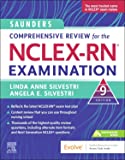
Strategies for Student Success on the Next Generation NCLEX® (NGN) Test Items
Next Generation NCLEX®-style practice questions of all types are illustrated through stand-alone case studies and unfolding case studies. NCSBN Clinical Judgment Measurement Model (NCJMM) is included throughout with case scenarios that integrate the six clinical judgment cognitive skills.
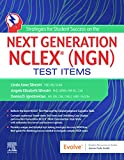
Saunders Q & A Review for the NCLEX-RN® Examination
This edition contains over 6,000 practice questions with each question containing a test-taking strategy and justifications for correct and incorrect answers to enhance review. Questions are organized according to the most recent NCLEX-RN test blueprint Client Needs and Integrated Processes. Questions are written at higher cognitive levels (applying, analyzing, synthesizing, evaluating, and creating) than those on the test itself.
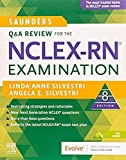
NCLEX-RN Prep Plus by Kaplan
The NCLEX-RN Prep Plus from Kaplan employs expert critical thinking techniques and targeted sample questions. This edition identifies seven types of NGN questions and explains in detail how to approach and answer each type. In addition, it provides 10 critical thinking pathways for analyzing exam questions.
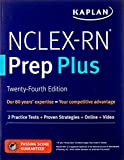
Illustrated Study Guide for the NCLEX-RN® Exam
The 10th edition of the Illustrated Study Guide for the NCLEX-RN Exam, 10th Edition. This study guide gives you a robust, visual, less-intimidating way to remember key facts. 2,500 review questions are now included on the Evolve companion website. 25 additional illustrations and mnemonics make the book more appealing than ever.
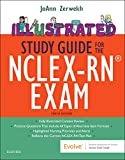
NCLEX RN Examination Prep Flashcards (2023 Edition)
NCLEX RN Exam Review FlashCards Study Guide with Practice Test Questions [Full-Color Cards] from Test Prep Books. These flashcards are ready for use, allowing you to begin studying immediately. Each flash card is color-coded for easy subject identification.

See also
Other recommended site resources for this nursing care plan:
- Nursing Care Plans (NCP): Ultimate Guide and Database MUST READ!
Over 150+ nursing care plans for different diseases and conditions. Includes our easy-to-follow guide on how to create nursing care plans from scratch. - Nursing Diagnosis Guide and List: All You Need to Know to Master Diagnosing
Our comprehensive guide on how to create and write diagnostic labels. Includes detailed nursing care plan guides for common nursing diagnostic labels.
References
- Aguera, Z., Lozano-Madrid, M., Mallorqui-Bague, N., Jimenez-Murcia, S., Menchon, J. M., & Fernandez-Aranda, F. (2020, April). A review of binge eating disorder and obesity. Neuropsychiatrie, 35(2).
- Astrup, A., & Bügel, S. (2019). Overfed but undernourished: recognizing nutritional inadequacies/ deficiencies in patients with overweight or obesity. International Journal of Obesity, 43.
- Beintner, I., Emmerich, O. L. M., Vollert, B., Taylor, C. B., & Jacobi, C. (2019). Promoting positive body image and intuitive eating in women with overweight and obesity via an online intervention: Results from a pilot feasibility study. Eating Behaviors, 34.
- Bianciardi, E., Di Lorenzo, G., Niolu, C., Betro, S., Zerbin, F., Gentileschi, P., & Siracusano, A. (2019). Body image dissatisfaction in individuals with obesity seeking bariatric surgery: exploring the burden of new mediating factors. Rivista di Psichiatria.
- Bonanno, A., Bimbo, F., Cleary, R., & Castellari, e. (2018). Food labels and adult BMI in Italy – An unconditional quantile regression approach. Food Policy, 74.
- Boutelle, K. N. (2020, June 18). Appetitive traits as targets for weight loss: The role of food cue responsiveness and satiety responsiveness. NCBI. Retrieved February 14, 2023.
- Byth, S., Frijters, P., & Beatton, T. (2022). The relationship between obesity and self-esteem: longitudinal evidence from Australian adults. Oxford Open Economics, 1.
- Caltabiano, M. L. (2020). Translational aspects of body image research for obesity-related quality of life and weight loss maintenance post-bariatric surgery. NCBI. Retrieved February 14, 2023.
- Chu, D.-T., Nhuyet, N. T. M., Nga, V. T., Thai Lien, N. V., Vo, D. D., Lien, N., Nhu Ngoc, V. T., Son, L. H., Le, D.-H., Nga, V. B., Tu, P. V., To, T. V., Ha, L. S., Tao, Y., & Pham, V.-H. (2018). An update on obesity: Mental consequences and psychological interventions. Diabetes & Metabolic Syndrome: Clinical Research & Reviews.
- Doenges, M. E., Moorhouse, M. F., & Murr, A. C. (2010). Nursing Care Plans: Guidelines for Individualizing Client Care Across the Life Span. F.A. Davis Company.
- Earlam, A. S., & Woods, L. (2020, June 4). Obesity: Skin issues and skinfold management. American Nurse.
- Food and Drug Authority (FDA). (2022, October 27). Medical Devices for Weight Loss and Weight Management: What to Know. FDA.
- Hamdy, O., & Khardori, R. (2023). Obesity: Practice Essentials, Background, Pathophysiology. Medscape Reference. Retrieved February 13, 2023.
- Himmelstein, M. S., & Puhl, R. M. (2018, September). Weight-based victimization from friends and family: implications for how adolescents cope with weight stigma. Pediatric Obesity, 14(1).
- Himmelstein, M. S., Puhl, R. M., & Quinn, D. M. (2018). Weight stigma and health: The mediating role of coping responses. Health Psychology, 37(2).
- Keane, E., Li, X., Harrington, J. M., Fitzgerald, A. P., Perry, I. J., & Kearney, P. M. (2017, March). Physical activity, sedentary behaviour and the risk of overweight and obesity in school aged children. Pediatric Exercise Science.
- Konttinen, H. (2020, March). Emotional eating and obesity in adults: the role of depression, sleep and genes. Proceedings of the Nutrition Society, 79(3).
- Lanoye, A., Grenga, A., Leahey, T. M., & LaRose, J. G. (2019). Motivation for weight loss and association with outcomes in a lifestyle intervention: comparing emerging adults to middle aged adults. NCBI. Retrieved February 14, 2023.
- Oh, Y. H. (2020, November 19). Sedentary Lifestyle: Overview of Updated Evidence of Potential Health Risks. NCBI. Retrieved February 16, 2023.
- Panuganti, K. K., Nguyen, M., & Kshirsagar, R. K. (2022, August 8). Obesity – StatPearls. NCBI. Retrieved February 15, 2023.
- Petridou, A., Siopi, A., & Mougios, V. (2019). Exercise in the management of obesity. Metabolism Clinical and Experimental, 92.
- Real Meal Revolution. (2019). Is your brain making you fat? Real Meal Revolution.
- Reifegerste, D., Wasgien, K., & Hagen, L. M. (2017). Online social support for obese adults: Exploring the role of forum activity. International Journal of Medical Informatics, 101.
- Schrimpf, A., McGarvey, S., Haun, D., Kube, J., Villringer, A., & Gaebler, M. (2019). Socio-cultural norms of body size in Westerners and Polynesians affect heart rate variability and emotion during social interactions. Culture and Brain, 7.
- Vandoni, M., Codella, R., Pippi, R., Pellino, V. C., Lovecchio, N., Marin, L., Silvestri, D., Gatti, A., Magenes, V. C., Regalbuto, C., Fabiano, V., Zuccotti, G., & Calcaterra, V. (2021). Combatting Sedentary Behaviors by Delivering Remote Physical Exercise in Children and Adolescents with Obesity in the COVID-19 Era: A Narrative Review. Nutrients, 13(12).
- Weimann, T., Fischer, M., & Schlieter, H. (2022). Peer Buddy or Expert? – On the Avatar Design of a Virtual Coach for Obesity Patients. Hawaiian International Conference on System Sciences.
- Xu, X., Leahey, T. M., Boguszewski, K., Krupel, K., Mailloux, K. A., & Wing, R. R. (2017, February). Self-Expansion is Associated with Better Adherence and Obesity Treatment Outcomes in Adults. Annals of Behavioral Medicine, 51(1).
- Zhou, L., Stamler, J., Chan, Q., Van Horn, L., Daviglus, M. L., Dyer, A. R., Miura, K., Okuda, N., Wu, Y., Ueshima, H., Elliot, P., & Zhao, L. (2019, July). Salt intake and prevalence of overweight/obesity in Japan, China, the United Kingdom, and the United States: the INTERMAP Study. The American Journal of Clinical Nutrition, 110(1).
- Ziser, K., Finklenburg, C., Behrens, S. C., Giel, K. E., Becker, S., Skoda, E.-M., Teufel, M., Mack, I., Zipfel, /., & Junne, F. (2019). Perceived Stress Mediates the Relationship of Body Image and Depressive Symptoms in Individuals With Obesity. Frontiers in Psychiatry, 10.
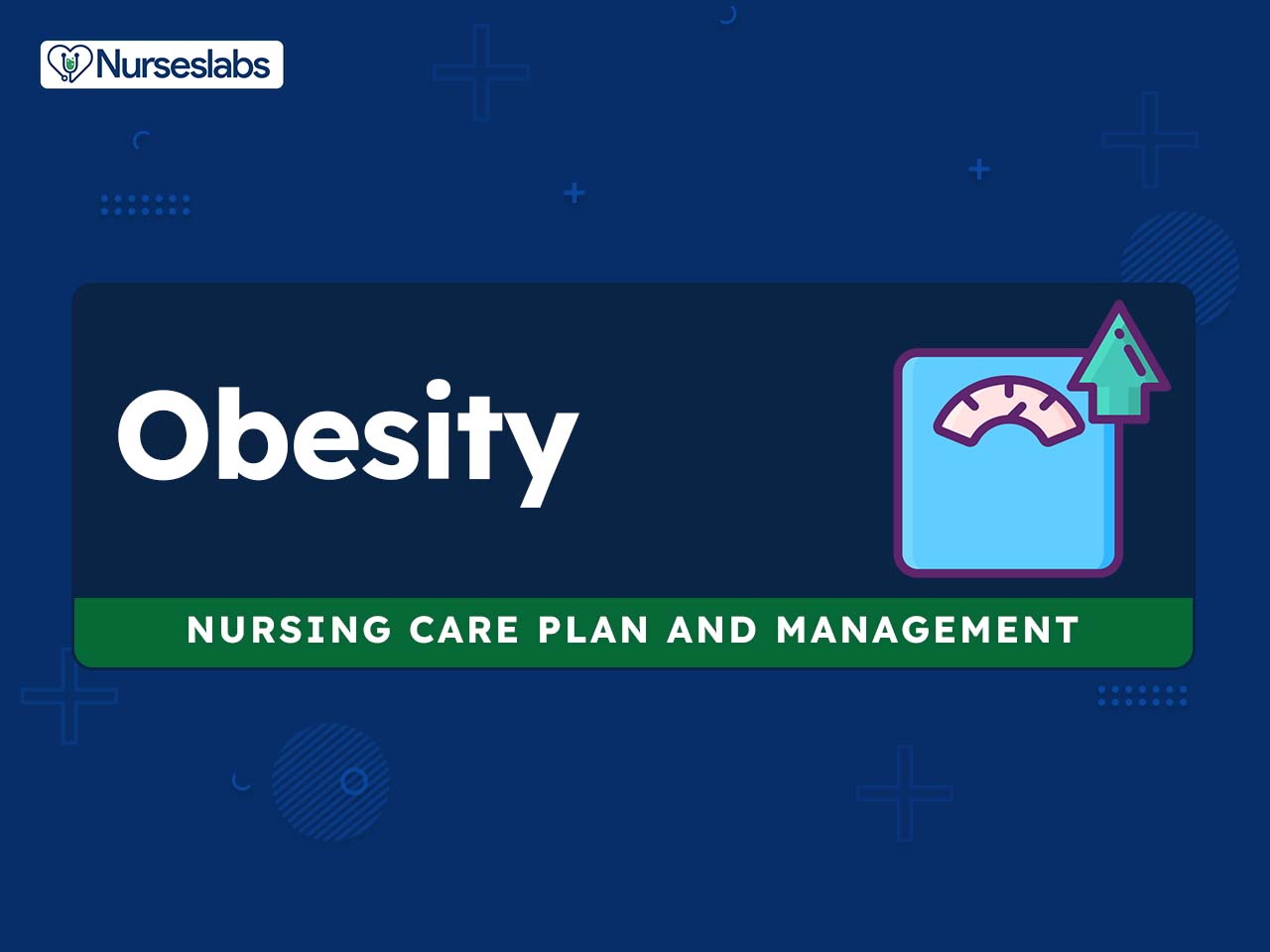

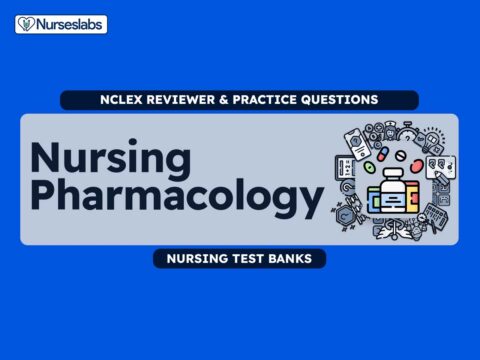
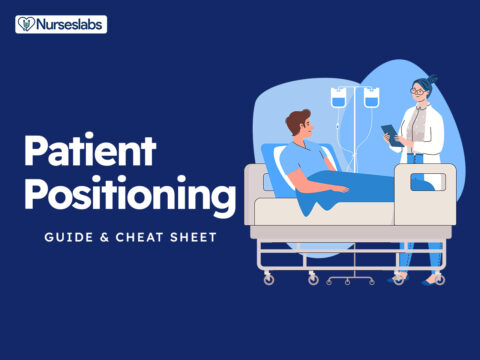





















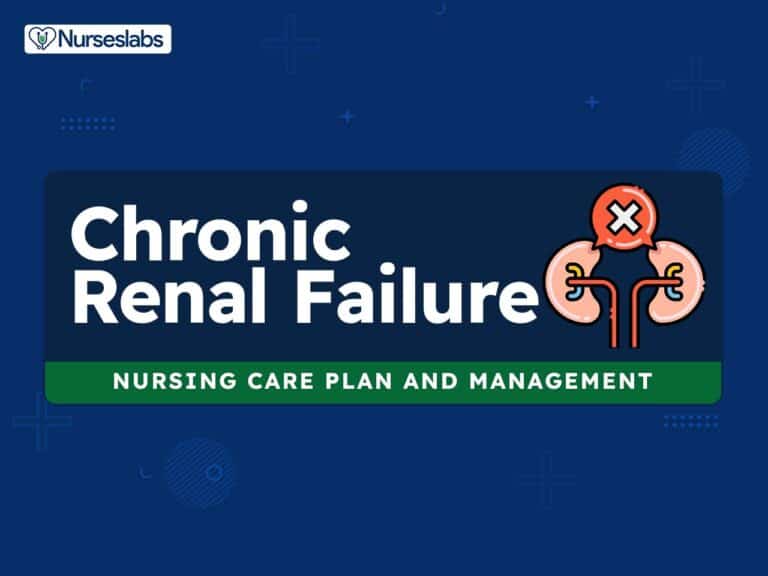
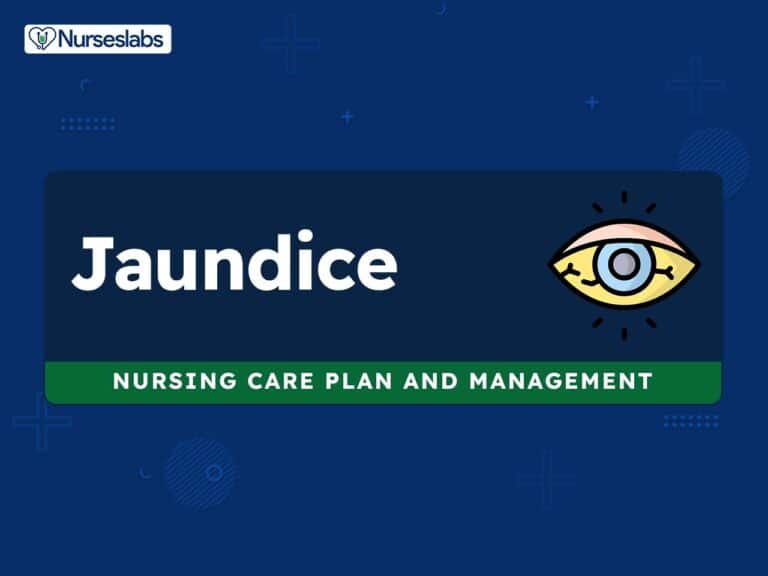
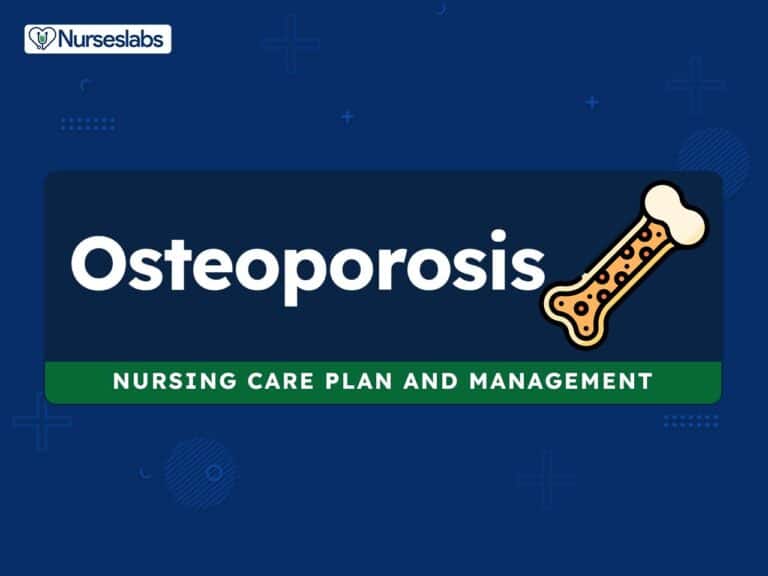

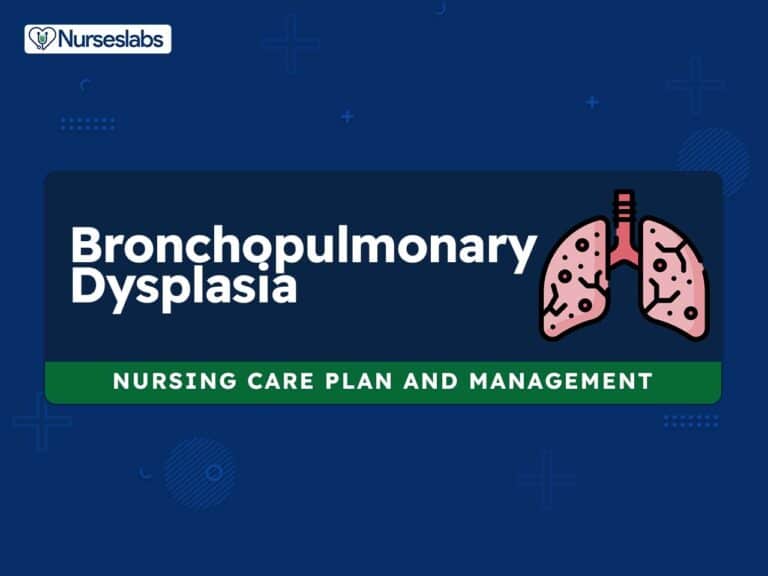
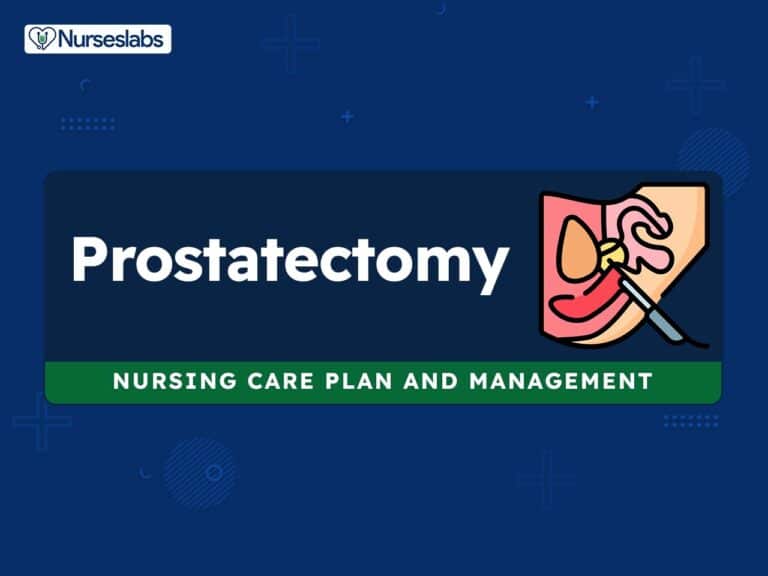

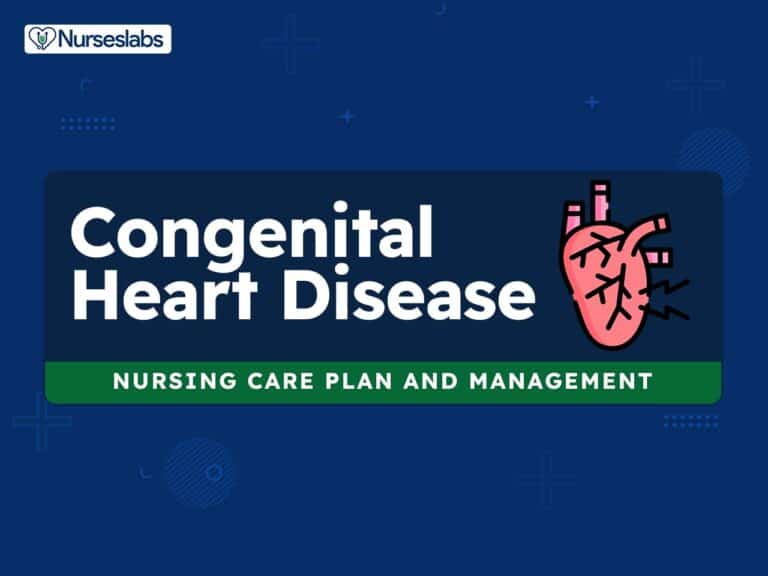




Leave a Comment